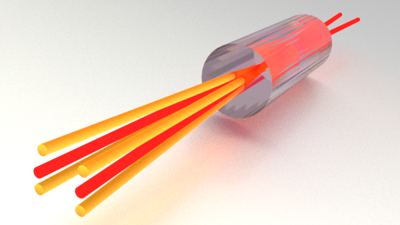Welcome to the Quantum Information and Nonlinear Optics Group Website!
Our group's research includes several projects surrounding the fields of quantum information technologies, machine learning, and optical communications. Some examples include developing and applying neural networks to classical and quantum communications, multi-party quantum networks, and quantum state estimation. One core aspect of this research is to improve our understanding of the fundamental physics surrounding quantum entanglement and quantum states of light, which are integral to the creation of future quantum networks. A second aspect involves utilizing these concepts in various computation, communication, and measurement protocols to enhance performance beyond classical limits. We are also developing machine learning tools for enhancing a variety of classical and quantum optical systems and protocols. This includes enhancing ground-to-satellite classical and quantum communications, in collaboration with NASA, ARL, and Howard University.
We have several ongoing and active collaborations with groups at the Army Research Laboratory, NASA Goddard, Howard University, LSU, and with colleagues here at Tulane. We are always happy to collaborate with folks that are interested in doing the same!
One experimental tool used in our research is four-wave mixing in warm atomic vapor. This process generates pairs of photons in separate spatial modes that exhibit stronger correlations than allowed by classical physics, in multiple degrees of freedom. When a laser is used to seed the process, bright “twin beams” of light are created. The correlations in these twin beam states are exploited to enhance, for example, interferometric measurements and the resolution of imaging systems. Investigating novel methods to generate highly multimode “squeezed” and entangled light is an important aspect of this research area, applicable to quantum networks.

We also have several projects involving the combination of machine learning, optical communications (both classical and quantum), and quantum measurement. This includes advancing current state-of-the-art free-space optical communications systems, enhancing quantum state estimation protocols, and the development of quantum networks.

The group is also interested in the generation of novel high-dimensional entangled states of light. This work involves creating robust continuous-variable states that are applicable to real-world systems in which scattering and decoherence are present. The fundamental behavior of the quantum information present in these states is a key theme in this research.
We are always interested in potential graduate students and postdocs. Please do not hesitate to contact me if you have any questions, or are considering joining our group!
